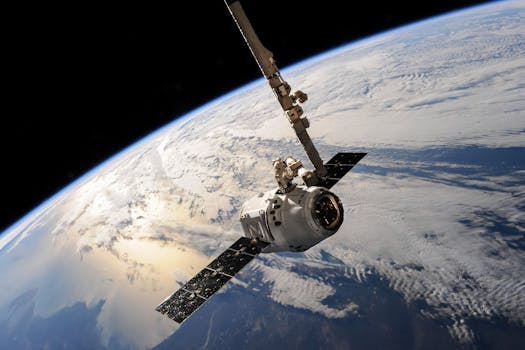Future of Satellites: The Next Generation of Space Exploration
The future of satellites is rapidly evolving, with new technologies and innovations set to transform the industry. From small satellites to satellite constellations, the next generation of space exploration is set to revolutionize the way we communicate, navigate, and understand our planet.

Future of Satellites: The Next Generation of Space Exploration
Future of satellites is a rapidly evolving field, with new technologies and innovations set to transform the industry. The use of satellites has become an essential part of our daily lives, from providing communication services to enabling navigation and remote sensing. As we look to the future, it is clear that the next generation of satellites will play an even more critical role in shaping our world.
The development of small satellites, also known as CubeSats, has been a significant factor in the growth of the satellite industry. These small, low-cost satellites have made it possible for new companies and organizations to enter the market, driving innovation and reducing the cost of access to space. Small satellites have a wide range of applications, from providing communication services to enabling the monitoring of environmental changes.
Advances in Satellite Technology

Advances in satellite technology are set to revolutionize the industry, with new materials, designs, and propulsion systems being developed. One of the most significant advances is the development of satellite constellations, which involve a large number of satellites working together to provide global coverage. These constellations have the potential to provide high-speed internet access to remote and underserved communities, as well as enabling the tracking of environmental changes and the monitoring of natural disasters.
Another area of advancement is in the field of propulsion systems, with the development of new engines and fuels set to increase the efficiency and lifespan of satellites. Electric propulsion systems, for example, offer a more efficient and cost-effective alternative to traditional chemical propulsion systems. These systems use electrical energy to accelerate charged particles, such as xenon gas, to generate thrust.
Applications of Satellites

Satellites have a wide range of applications, from providing communication services to enabling the monitoring of environmental changes. One of the most significant applications is in the field of navigation, with satellites providing location information and timing signals to GPS receivers on the ground. This has revolutionized the way we navigate, enabling accurate positioning and timing information to be available anywhere in the world.
Satellites are also used to monitor environmental changes, such as deforestation, ocean health, and climate change. By providing high-resolution images and data, satellites enable scientists to track changes to the environment and understand the impacts of human activity. This information can be used to inform policy decisions and develop strategies for mitigating the effects of environmental change.
Conclusion

In conclusion, the future of satellites is a rapidly evolving field, with new technologies and innovations set to transform the industry. From small satellites to satellite constellations, the next generation of space exploration is set to revolutionize the way we communicate, navigate, and understand our planet. As we look to the future, it is clear that satellites will play an even more critical role in shaping our world, enabling us to address some of the most pressing challenges facing our planet.
See more:







